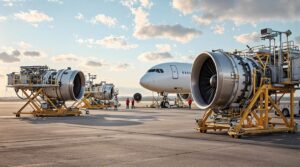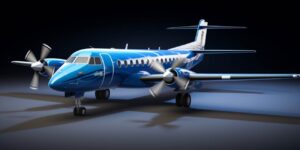As nations scrambled to gain supremacy, airplanes emerged as a game-changer. These flying machines, initially seen as mere reconnaissance tools, soon evolved into lethal weapons, fundamentally altering the strategies employed in the war. The impact of aircraft on WW1 was multi-faceted, influencing everything from reconnaissance to tactical bombing.
One of the key roles played by aircraft was in the realm of reconnaissance. In the early stages of the war, pilots took to the skies equipped with rudimentary cameras, providing commanders with a newfound perspective on the battlefield. The ability to gather real-time intelligence from the air gave commanders a strategic advantage, enabling them to make informed decisions and adapt to the ever-changing dynamics of the frontlines.
However, it wasn’t long before aircraft transcended their initial reconnaissance role and entered the realm of dogfights. The introduction of fighter planes marked a pivotal moment in the war. The skies became a battleground where pilots engaged in high-stakes duels, showcasing not only their flying skills but also the rapid evolution of aerial combat tactics. The importance of air superiority became evident, as control of the skies directly translated into dominance on the ground.
Strategic bombing emerged as another facet of aircraft impact. With the ability to carry significant payloads, bombers became a powerful tool for disrupting enemy infrastructure. Cities previously considered safe from direct attacks now faced the ominous threat of aerial bombardment. The psychological impact of these raids was immense, instilling fear and uncertainty among civilian populations.
The utilization of biplanes and triplanes became iconic symbols of the air war in WW1. These agile and maneuverable aircraft showcased the rapid technological advancements occurring in a short span. Aerial innovations were not limited to offense; defensive measures such as anti-aircraft guns and early attempts at air-to-air combat tactics also evolved in response to the changing nature of warfare.
Aircraft technology innovations that impacted world war one strategy
World War I witnessed unprecedented innovations in aircraft technology that profoundly influenced military strategy and tactics. The emergence of aerial reconnaissance played a pivotal role in shaping battlefield dynamics. Pilots flying in biplanes equipped with primitive cameras provided commanders with invaluable intelligence, enabling strategic planning and real-time decision-making.
The development of fighter aircraft marked a revolutionary shift in aerial warfare. Early in the conflict, aircraft were primarily used for observation, but the advent of specialized dogfighters altered the landscape. The iconic Sopwith Camel and the German Fokker Dr.I became symbols of this new era. Their agility and firepower allowed pilots to engage in intense aerial duels, reshaping how battles unfolded in the skies.
One of the most significant innovations was the introduction of strategic bombing. Zeppelins and later, heavy bombers like the Gotha G.IV, carried out raids deep into enemy territory, targeting industrial centers and civilian populations. This marked a shift from localized conflicts to a more widespread and devastating form of warfare.
The development of machine guns for aircraft brought about a paradigm shift in air-to-air combat. Coordinating with the synchronized firing of the propeller, these weapons gave pilots a distinct advantage in engaging enemy planes. The iconic Vickers machine gun became a staple in many aircraft, enhancing their offensive capabilities.
The advent of radio communication further transformed air warfare. Real-time communication between pilots and ground control enabled more coordinated and effective operations. This innovation streamlined command structures and enhanced the overall efficiency of aerial missions.
Moreover, the introduction of aircraft carriers fundamentally changed naval strategies. These floating airbases extended the reach of aircraft, allowing for strategic strikes and reconnaissance far beyond the capabilities of land-based planes. The Battle of Jutland underscored the potential of aircraft carriers in naval warfare.
As the war progressed, so did the innovation in aerial tactics. The concept of the flying ace gained prominence, with pilots like Manfred von Richthofen, the Red Baron, achieving legendary status. These aces demonstrated the importance of individual skill and tactics in the increasingly complex world of aerial combat.
Critical aircraft technology advances during 1914-1918 conflict
The years 1914-1918 marked a transformative era for aircraft technology. As the Great War unfolded, aviation rapidly evolved, pushing the boundaries of what was considered possible. Among the key aspects that witnessed groundbreaking advancements were engines, performance, speed, ceilings, armament, payloads, range, navigation, and wireless communication.
One of the pivotal developments during this period was the revolution in engine technology. The traditional piston engines began to be replaced by more powerful and efficient models. The introduction of inline and rotary engines significantly boosted the overall performance of aircraft. These engines, often water-cooled, provided greater reliability and allowed for increased power, fundamentally altering the dynamics of aerial warfare.
The relentless pursuit of higher speed became a defining characteristic of the aviation race. Aircraft designers sought to break through previous limitations, aiming for unprecedented velocities. The advent of streamlined fuselages and improved engine designs played a crucial role in achieving remarkable increases in speed, enabling aircraft to outpace their predecessors and adversaries.
Ceilings reached new heights as aviators explored the potential of flying at elevated altitudes. This was not merely a quest for altitude records but a strategic move to gain advantages in combat. Altitude provided a tactical edge, allowing pilots to spot enemies from afar and engage in surprise attacks. Innovations in engine technology and aerodynamics played a pivotal role in pushing the ceilings higher, changing the dynamics of aerial engagements.
The integration of advanced armament systems became a necessity as air warfare became more sophisticated. Machine guns, initially mounted awkwardly, saw improvements in placement and synchronization with propellers. This innovation drastically increased the lethality of aircraft, transforming them from mere reconnaissance tools to formidable armament-laden war machines.
Enhancements in payloads became a critical focus as aircraft were tasked with more diversified roles. Bombers, in particular, underwent significant developments in their capacity to carry and deliver payloads. This evolution paved the way for strategic bombing, altering the nature of warfare by bringing the battle to the enemy’s homeland.
The expansion of range became imperative as military strategies demanded aircraft to cover larger distances. Fuel efficiency, improved aerodynamics, and advancements in engine technology collectively contributed to extending the operational range of aircraft. This not only facilitated longer reconnaissance missions but also allowed for strategic deployment of forces across vast distances.
Effective navigation emerged as a critical challenge as aircraft ventured into uncharted territories. Navigational instruments evolved from basic compasses to more sophisticated tools, enhancing pilots’ ability to traverse vast distances with precision. This was especially crucial for long-range missions and aerial offensives where accurate navigation could mean the difference between success and failure.
The wireless communication revolutionized coordination and intelligence gathering during aerial operations. Radios became essential equipment, enabling real-time communication between pilots and ground control. This innovation facilitated better coordination among squadrons, improving the efficiency and effectiveness of aerial missions.
As the Great War unfolded, these critical advancements in engines, performance, speed, ceilings, armament, payloads, range, navigation, and wireless communication not only shaped the course of aerial warfare but laid the foundation for the rapid progress of aviation in the years to come.
Pivotal aircraft designs and innovations decisively shaping ww1 campaigns
The Fokker Eindecker played a pivotal role in shaping World War I aerial warfare with its groundbreaking synchronization machine guns. Before this innovation, pilots struggled to fire through spinning propellers without damaging them. The Eindecker, equipped with a synchronization mechanism, allowed for uninterrupted firing through the propeller arc, giving German pilots a significant advantage.
The Sopwith Camel, another iconic aircraft, became a symbol of Allied air power. Its exceptional agility made it a formidable opponent in dogfights. The Camel’s design, incorporating a rotary engine, provided excellent maneuverability, while its twin synchronized machine guns gave it firepower to match its agility.
On the Allied side, the Bristol Fighter emerged as a versatile and effective aircraft. It combined a forward-firing synchronized machine gun with a rearward-facing gun operated by an observer, making it a formidable opponent and a successful two-seater fighter.
The introduction of Handley Page bombers marked a shift towards long-range strategic bombing. These large aircraft, capable of carrying heavy bomb loads, targeted enemy infrastructure deep behind the front lines, influencing the course of the war.
German innovation extended to the menacing Gotha bombers. These large aircraft, with their twin engines and long-range capabilities, carried heavy bomb loads, striking fear into Allied cities. The Gotha bombers represented a shift towards strategic bombing on the German side.
While aircraft played a crucial role, the era also witnessed the use of zeppelins as strategic bombers. These airships, like the infamous Zeppelin raids over London, demonstrated the potential of aerial warfare beyond traditional aircraft.
Additionally, aerial photography became an essential tool for military intelligence. Reconnaissance planes captured detailed images of enemy positions, aiding in strategic planning. The ability to gather intelligence from the air significantly impacted the conduct of the war.
Furthermore, the practice of artillery spotting from the air emerged as a crucial tactic. Observers in aircraft directed artillery fire with increased accuracy, leading to more effective and targeted attacks on enemy positions.






